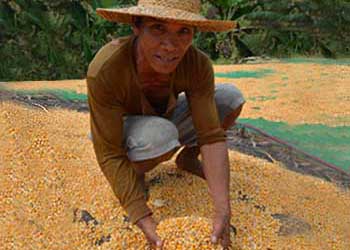
Corresponding Author
Edgardo E. Tongson
World Wide Fund for Nature - Philippines
etongson@gmail.com
Download activity - last 12 months
Simulating impacts of El Niño and climate change on corn yield in Isabela, Philippines
- Received: 08 March 2016 / Accepted: 07 November 2016/ Published online: 26 January 2017
-
https://doi.org/10.18783/cddj.v002.i01.a04
Highlights
- Crop simulations showed 7% to 13% reductions in growing cycles and 17% to 41% reductions in mean yields.
- The 11% to 13% reductions in wet yields were due to effects of rising temperatures than CO2 fertilization impacts.
- Projected rainfall patterns showed wet months becoming wetter and dry months becoming drier.
- The length of growing seasons will be reduced from 11 months to 8 to 9 months.
- Advancing planting dates and improving irrigation access can help mitigate heat and water stress from climate change.
Abstract
Advancing climate change and increasing frequency of El Niño events will impact corn growth and development in Isabela Province. This study assessed the potential impact of El Niño and climate change on yellow corn (Zea mays L.). The Aquacrop model was calibrated and validated with acceptable accuracy using destructive sampling in four farms in Isabela Province. Yields from past El Niño events were simulated and analyzed. Future yields were simulated using MarkSim daily weather generator. The MarkSim-generated weather files showed good agreement with observed temperatures in our study site but poor agreement with rainfall. The projected increases in temperatures were within the ranges predicted by the Intergovernmental Panel on Climate Change. Projected rainfall patterns showed wet months becoming wetter and dry months becoming drier. Crop simulations showed 7% to 13% reductions in growing cycles and 17% to 41% reductions in mean yields. Reductions in mean yields were due to the larger influence of water stress on dry yields. The 11% to 13% reductions in wet yields were due to effects of rising temperatures than CO2 fertilization impacts. The expansion of dry months will reduce length of growing seasons and shorten available growing windows for rainfed farms. Changing planting dates and improving irrigation access can help mitigate heat and water stress from climate change.
Citation
Related Articles
Keywords
-
A+
-
A
-
A-


